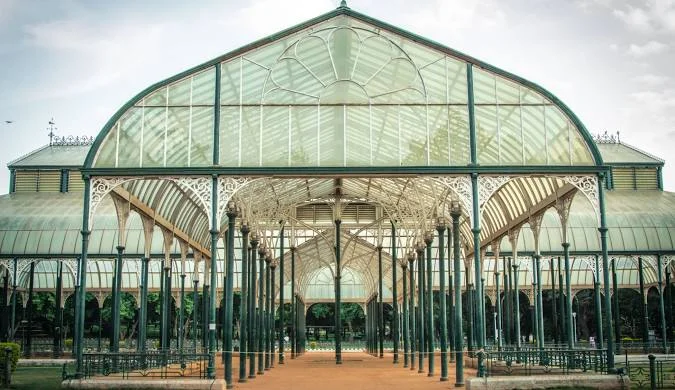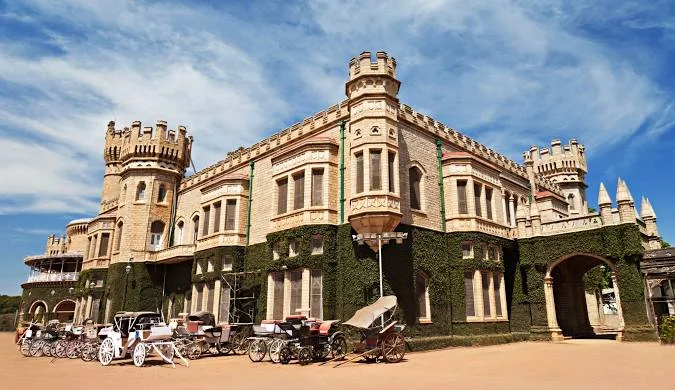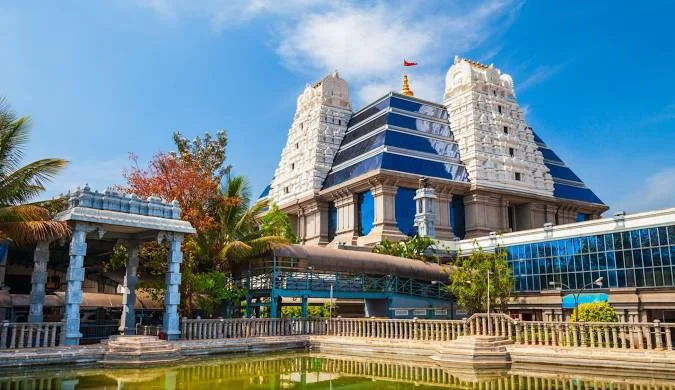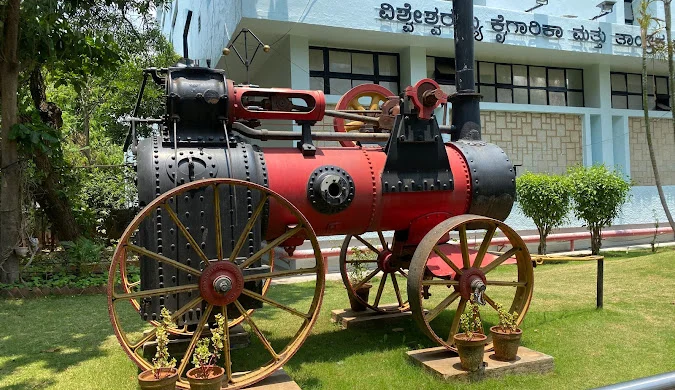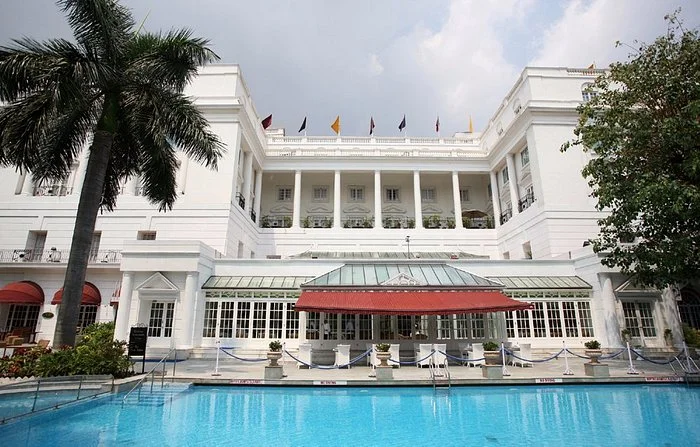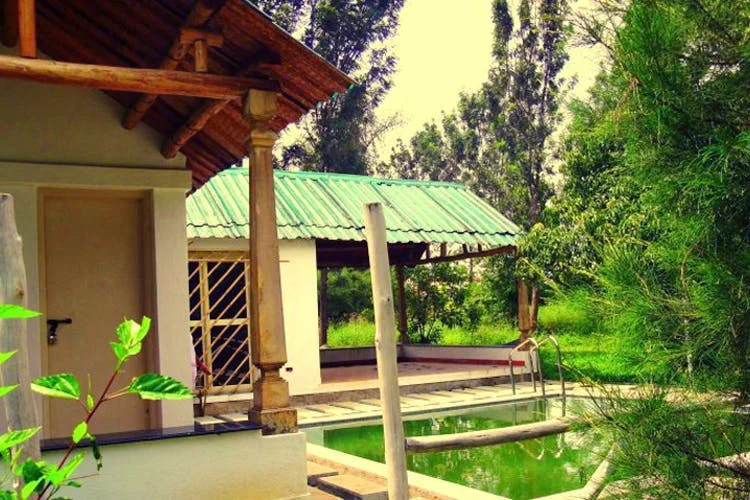Bangalore
City in Karnataka




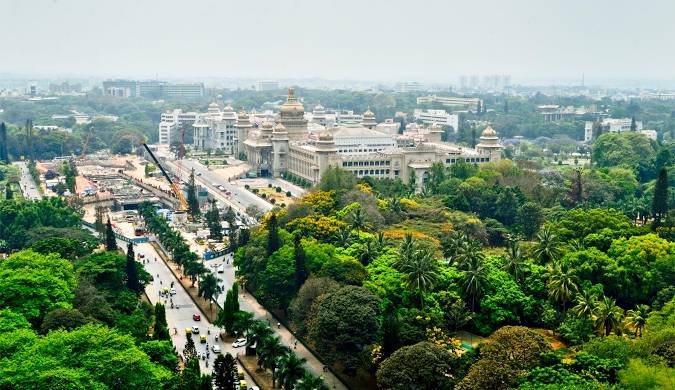
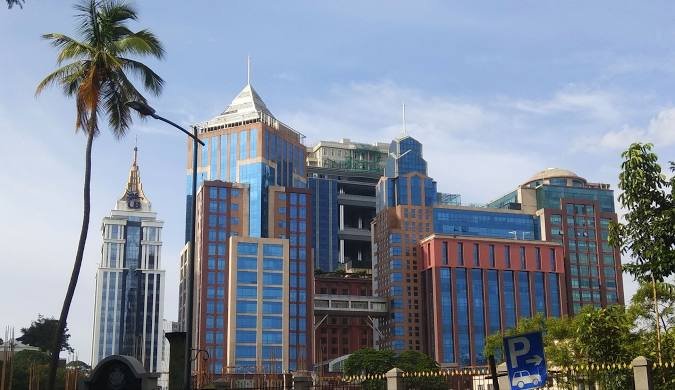
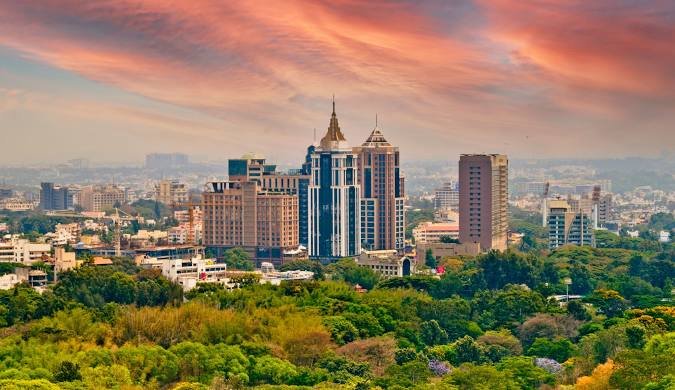
Top Categories
Best Time To Visit Bangalore
1. October to February (Winter and Post-Monsoon Season)
- Temperature: The temperature during this time ranges from 15°C to 30°C (59°F to 86°F), making it cool and enjoyable.
- Weather: The weather is mild and pleasant, with clear skies and less humidity. This is the perfect time to visit Bangalore for outdoor activities like trekking, sightseeing, or exploring gardens and parks.
- Festivals: Many festivals like Diwali, Christmas, and New Year are celebrated during this period, adding to the charm of the city.
2. March to May (Summer)
- Temperature: Temperatures can rise up to 35°C to 38°C (95°F to 100°F), but since Bangalore is located at a higher altitude, it is relatively cooler than other parts of India.
- Weather: Summer can be hot, but it’s still manageable due to the city’s relatively moderate temperature. The evenings are cooler and comfortable.
- Note: This is not the ideal time for outdoor activities, but if you are visiting for business or specific events, you can still explore the city in the mornings or evenings.
3. June to September (Monsoon)
- Rainfall: Bangalore experiences heavy rains from June to September, which can disrupt sightseeing plans.
- Weather: It can be humid and wet during this time, and some outdoor activities might not be possible due to the rain. However, if you enjoy the monsoon ambiance, the lush green surroundings can be quite refreshing.
- Note: This period is less popular for tourists, but it offers lower accommodation rates and fewer crowds.
Places To Visit In Bangalore
About Bangalore
Bangalore, also known as Bengaluru, is the capital of the southern Indian state of Karnataka. It is one of the country’s largest cities and is often referred to as the “Silicon Valley of India” due to its booming IT industry. Known for its vibrant culture, pleasant climate, and modern infrastructure, Bangalore attracts both tourists and professionals from across the world.
The Popular Hotels in Bangalore
1. Location and Geography
- Location: Bangalore is located in the southern part of India, about 1,000 meters (3,280 feet) above sea level in the Deccan Plateau.
- Climate: Bangalore is known for its moderate and pleasant climate throughout the year. It has a tropical savanna climate with cooler temperatures compared to other major cities in India, thanks to its elevation.
2. History
- Foundation: Bangalore was originally founded by Kempe Gowda I in 1537. It was established as a fortified city with a royal palace.
- Colonial Era: During the British Raj, it became a significant military station and the summer capital of the Mysore Kingdom.
- Modern Bangalore: Over the last century, Bangalore has transformed from a quaint colonial town to a bustling metropolis, becoming India’s Silicon Valley due to its thriving IT industry.
3. Economy and Industry
- IT Hub: Bangalore is often referred to as the “Silicon Valley of India” because of its booming information technology (IT) sector. Major global tech companies, as well as homegrown startups, have their offices in the city.
- Aerospace and Biotechnology: In addition to IT, the city has a growing aerospace, defense, and biotechnology industry. Many companies and research institutions operate in these fields.
- Education and Research: Bangalore is home to prestigious educational institutions such as the Indian Institute of Science (IISc), Indian Institute of Management (IIM), and numerous universities and research centers.
4. Culture and Heritage
- Multicultural Population: The city is home to a diverse population, with people from all over India and abroad. This diversity is reflected in the city’s food, music, festivals, and lifestyle.
- Cuisine: Bangalore offers a wide variety of food options. Some popular dishes include masala dosa, idli, vada, and a rich coffee culture. The city is also known for its vibrant craft beer scene.
- Festivals: Major festivals such as Deepavali, Ugadi (the Kannada New Year), and Karaga are celebrated with great enthusiasm. The city also has a thriving theater, music, and dance scene.
5. Education and Research
- Bangalore is considered an educational hub in India, with institutions like the Indian Institute of Science (IISc) and Indian Institute of Management (IIM-Bangalore). The city also hosts various international schools and universities, making it a preferred destination for students from all over the country and abroad.
6. Transportation
- Public Transit: Bangalore has a well-developed public transport network, including a metro system (Namma Metro), buses, and auto-rickshaws.
- Airports: The Kempegowda International Airport (BLR) serves as the main airport, connecting the city to domestic and international destinations.
- Traffic and Infrastructure: Traffic congestion is a common challenge in Bangalore, as the city’s rapid growth has outpaced its infrastructure development.
7. Tourist Attractions
- Lalbagh Botanical Garden: One of the city’s oldest and most famous gardens, with a wide variety of plants and a glasshouse inspired by London’s Crystal Palace.
- Cubbon Park: A large green space in the heart of the city, ideal for leisurely walks and outdoor activities.
- Bangalore Palace: A historic palace that reflects Tudor-style architecture and is a popular tourist spot.
- Vidhana Soudha: The legislative building of Karnataka, known for its impressive Neo-Dravidian architecture.
- Nandi Hills: A short drive from Bangalore, offering scenic views and a popular spot for trekking and sunrise watching.
8. Challenges
- Traffic: One of the major challenges Bangalore faces is its traffic congestion. Despite efforts to improve infrastructure, the increasing population and the influx of people for work and education continue to put pressure on the city’s roads.
- Urbanization: Rapid urbanization has led to the loss of green spaces, pollution, and other environmental concerns.
- Water and Waste Management: Bangalore has been facing water scarcity issues, which are exacerbated by its rapid urban growth. Managing waste and treating sewage is also an ongoing challenge.
9. Demographics
- Population: As of the most recent estimates, Bangalore has a population of over 13 million people, making it one of the most populous cities in India.
- Languages: Kannada is the official language of Bangalore, but English, Tamil, Telugu, and Hindi are also widely spoken, given the city’s cosmopolitan nature.
Bangalore is a city that embodies the balance of modernity and tradition. It continues to thrive as a major economic hub while preserving its historical and cultural richness.










